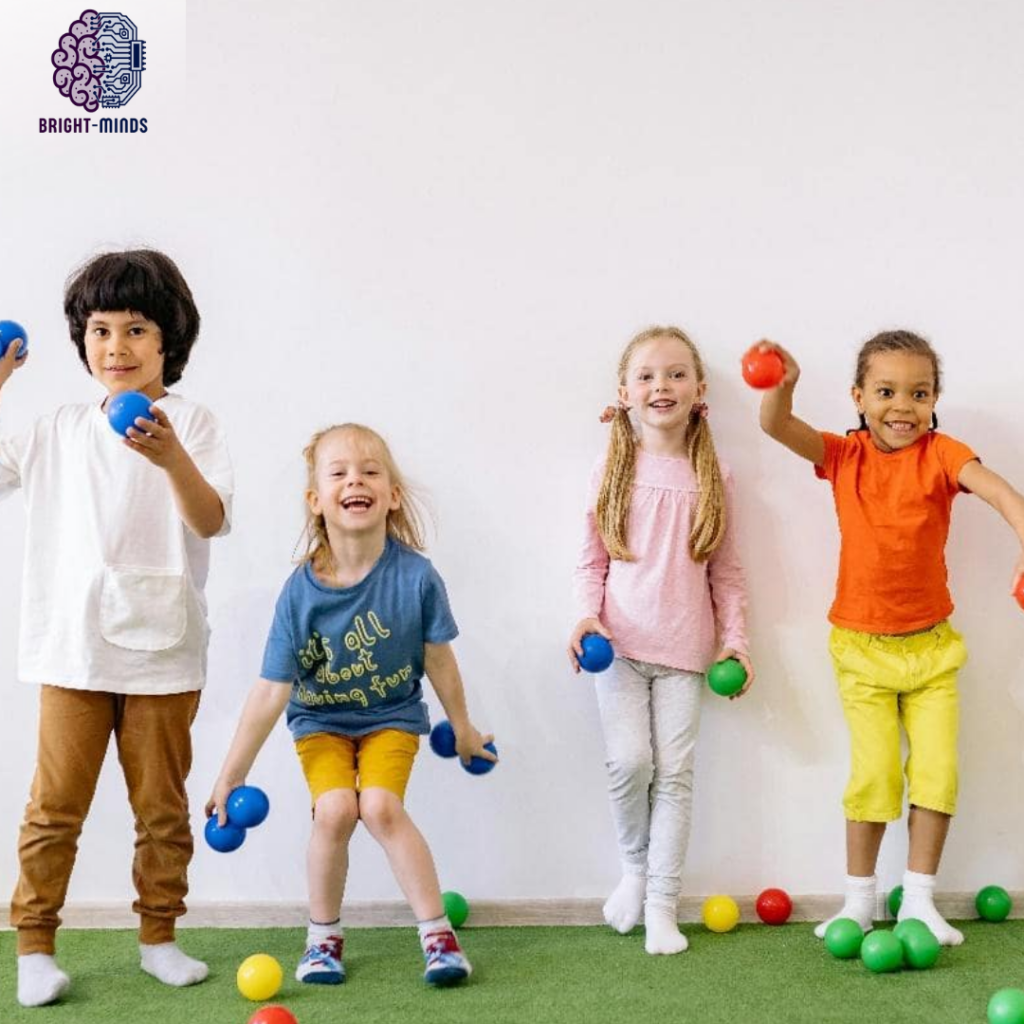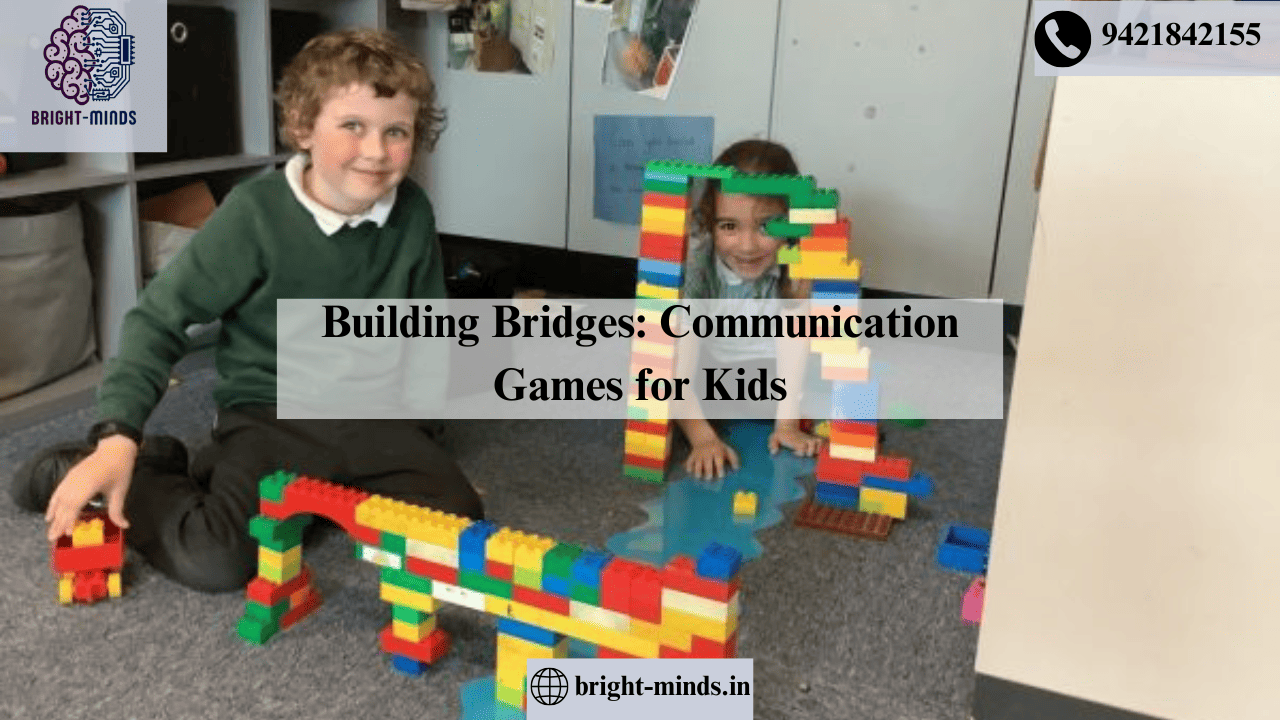Effective communication is a vital skill that helps individuals navigate personal, social, and academic spaces. For children, communication isn’t just about speaking clearly but also understanding, interpreting, and responding to various social cues, emotions, and ideas. From an early age, fostering strong communication skills is crucial for emotional development, social integration, and academic success. One of the best ways to encourage these skills is through fun, interactive communication games.

Why Communication Skills Matter for Kids
Communication skills help children articulate their thoughts, understand others, and work through conflicts. These skills are especially important in the classroom, where children are expected to interact with their peers and teachers. Strong communicators are better at expressing their feelings, asking for help, and participating in group activities. In addition, these skills are foundational for developing empathy, building friendships, and establishing connections within the family.
For kids, learning these skills through games is not only effective but enjoyable. Games provide an immersive, hands-on experience where children can practice communication in real-world contexts, while also having fun and building stronger relationships with others. Let’s take a deeper dive into some communication games for kids that can be easily integrated into home or school settings.
1. The Telephone Game (Chinese Whispers)
This classic game is a great way to help children practice listening skills and the art of conveying information accurately. It also emphasizes the importance of paying attention and communicating clearly to avoid misunderstandings.
How to Play:
- The group sits in a circle. One child thinks of a sentence (the more complicated, the more fun!).
- The first child whispers the sentence into the ear of the person next to them.
- The sentence is passed around the circle until it reaches the last person.
- The final person says the sentence aloud. Often, the sentence has changed dramatically, leading to lots of laughter and discussion about how messages can get distorted.
Benefits:
- Encourages careful listening and clear articulation.
- Teaches the importance of being specific when communicating.
- Helps children understand how easily information can change when passed along.
2. Charades
Charades is a game of acting without speaking, where children learn to interpret non-verbal cues and express themselves creatively. This game helps children understand the importance of body language and gestures in communication.
How to Play:
- One child picks a word or phrase from a hat or list of pre-made prompts.
- The child must act out the word or phrase without speaking or making any sounds.
- The other players try to guess what the child is acting out based on their gestures and expressions.
Benefits:
- Enhances non-verbal communication skills, such as body language and facial expressions.
- Builds vocabulary and encourages creative thinking.
- Fosters teamwork and collaboration as children work together to guess the correct answer.
3. The Emotion Charade Game
This variation of charades focuses specifically on emotional expressions. It teaches children how to identify and communicate feelings through body language, which is an essential part of emotional intelligence.
How to Play:
- Write various emotions (happy, sad, angry, excited, etc.) on small pieces of paper and place them in a bowl or hat.
- One child draws a piece of paper and then acts out the emotion without speaking.
- The other players guess which emotion the child is expressing.
Benefits:
- Develops emotional literacy by helping children identify and express their feelings.
- Teaches empathy as children try to understand how others are feeling.
- Encourages awareness of non-verbal communication cues related to emotions.
4. Storytelling Circle
Storytelling is a fantastic way to improve both listening and speaking skills. By creating a collaborative story, children can practice how to effectively share ideas, build upon others’ input, and follow a narrative structure.
How to Play:
- Sit in a circle and begin a story with one sentence, for example, “Once upon a time, in a land full of talking animals…”
- The next person in the circle adds to the story with another sentence, continuing where the previous person left off.
- Continue passing the story around until everyone has had a chance to contribute.
- Optionally, you can set themes or challenges for the stories (e.g., all characters must be animals or the story must take place in outer space).
Benefits:
- Encourages creative thinking and narrative development.
- Improves both speaking and listening skills as children must pay attention to the ongoing story and add relevant details.
- Promotes teamwork and collaboration, as the children work together to create a cohesive story.
5. What’s Missing?
This game improves both observation skills and verbal communication. Children must not only pay close attention to detail but also articulate what they’ve noticed in a clear and concise manner.
How to Play:
- Place a set of objects on a table in front of the children.
- Give them a few seconds to observe the items.
- One child closes their eyes, and the game leader removes one object from the table.
- The child must then guess which object is missing by describing it and its place in the original lineup.
Benefits:
- Enhances observation and descriptive skills.
- Teaches children how to pay attention to details and communicate these details effectively.
- Develops problem-solving skills as children deduce which item is missing.
6. Pictionary
This popular drawing game can help children develop communication skills while encouraging them to express ideas visually. It fosters teamwork and requires children to interpret and convey abstract concepts.
How to Play:
- Divide the children into teams.
- A player from the first team draws a word or phrase without using letters or numbers while the rest of the team tries to guess what it is.
- Set a time limit for each round. The team that guesses correctly gets a point.
Benefits:
- Develops creativity and quick thinking.
- Encourages teamwork and communication as children must describe or guess the drawing.
- Enhances the ability to visualize ideas and concepts.
7. Two Truths and a Lie
This game is excellent for building trust, conversation skills, and the ability to identify factual versus fictional information. It can be a fun icebreaker activity for new groups of children.
How to Play:
- Each child takes a turn saying three statements about themselves: two true and one false.
- The other children must guess which statement is the lie.
Benefits:
- Helps develop questioning and deductive reasoning skills.
- Encourages listening and attention to detail.
- Fosters a deeper understanding of one another through personal stories.
8. Back-and-Forth Drawing
This is a great game for younger children to practice listening and working collaboratively. It also promotes creativity and understanding how to communicate ideas through images.
How to Play:
- One child starts by drawing a simple shape, object, or picture on a piece of paper.
- The next child adds to the drawing without erasing or changing what was already there.
- Continue passing the paper around, each child adding something new to the drawing.
Benefits:
- Promotes collaborative work and creative expression.
- Teaches children how to interpret and expand upon the ideas of others.
- Helps build patience and attention to detail.
9. Role-Playing Scenarios
Role-playing is a great way for children to practice communication in various real-life situations. It helps them understand how to adapt their language and tone depending on the context and audience.
How to Play:
- Prepare a list of scenarios (e.g., ordering food at a restaurant, visiting the doctor, or asking for help at school).
- Assign roles and have the children act out the situations, using appropriate language and behavior for each scenario.
Benefits:
- Helps children practice using polite and appropriate language.
- Teaches social norms and etiquette.
- Encourages children to think critically about how they communicate in different situations.
Conclusion
Building strong communication skills in children is essential for their social, emotional, and cognitive development. Through interactive games, children not only have fun but also enhance their ability to express themselves clearly, listen attentively, and collaborate with others. Whether it’s through acting, storytelling, or problem-solving, communication games provide an excellent opportunity for children to learn while engaging in enjoyable activities.
By incorporating these games into daily routines, parents, teachers, and caregivers can help children develop a lifelong appreciation for effective communication, fostering stronger relationships and greater confidence as they grow.
Also Read:
https://bright-minds.in/unlocking-word-meaning-for-class-ukg-english-to-hindi/Edit

